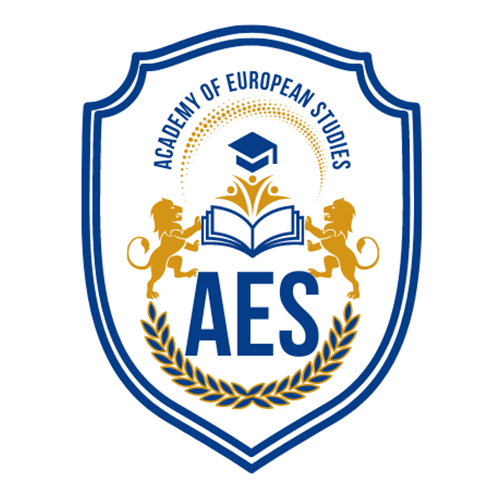School of Business Mission
We aim to provide prominent international students with all the necessary modern equipment to construct high-performance buildings and structures that are sustainable, resilient, and profitable to ensure safety, health, and comfort. Our graduates are widely respected around the globe through their architectural designs combined with solid engineering education.

- Latest 3D Visualization Software
- Diverse Variety of Careers
- System of Practical Classes
- Live Artistic Projects Creating
About the Courses
- Name of specialty – Architecture and Engineering.
- Level of Higher Education – First (Bachelor’s) and Second (Master`s) level .
- The duration of studying – 4 years of full-time studying (Bachelor`s) and 2-3 years of full-time studying (Master, Ph.D., Doctorate).
- Medium of Instruction – English.
European School of Architecture and Engineering is an environment of an informal approach to training highly qualified specialists in the construction field. Future architects and engineers will have an opportunity to become acquainted with the most modern technologies, software packages, and digital solutions which are used nowadays both in Ukraine and beyond its borders for solving topical problems of forming living and human activity space. In the present circumstances of life and activity intensification, the issue of creating a comfortable environment of human existence is coming to the forefront. It includes the living environment, work environment, and external environment. This is what architects and civil engineers are working at, using modern technologies and materials.
- Name of the specialty – Architecture and Engineering
- Level of Higher Education – First (Bachelor’s) and Second (Master, Ph.D., Doctorate) level
- The List of Specializations and Educational Programs– Architecture and Urban Planning, Construction and Civil Engineering, Geodesy and Land Management
- The total amount of credits of the European Credit Transfer and Accumulation System — 360 credits;
- The duration of studying– 4 years of full-time studying (Bachelor`s) and 2-3 years of full-time studying (Master, Ph.D., Doctorate)
Compulsory Subjects
Studying curricula cover a comprehensive range of subjects. The major subjects (or modules) are:
- Architectural, Engineering, and Computer Graphics
- Informatics and Foundations of Computer-aided Design
- Foundations of Ecology, Health, and Wellness
- Descriptive Geometry
- Foundations of Geodesy
- Foundations of Structural Theory
- Drawing, Painting, Sculpture
- Architectural Materials Science
- Constructions of Building and Structures
- History of Architecture and City Planning
- Architectural Design
- Architecture Theory
- Composition and Architectural Composition
- Plumbing and Heating Installations of territory, Transportation
- Construction Technology
- Computer Modeling of Architectural Object
- Economics of Architectural Design
- Practical Foundations of Architectural Design of Industrial and Civil Structures
- Practical Foundations of Architectural Design of Municipal Facilities
- History of Arts: Visual, Decorative, Design
- Practical Foundations of Architectural Design of Public Facilities
- Plumbing and Heating Installations
- Foundations of Reconstruction and Restoration of Structures
- Foundations of Construction Economics
- Architectural Constructions
- Aesthetics of Architecture
- Foundations of Technology of Design Project Realization
- Procedure for Developing Specification Documents
- Information Technologies in Architecture
- Graphic Techniques in Architectural Design
- Urban Sociology
- Synthesis of Arts
- Theory and Practice of Architectural Visualization
- Engineering Equipment in Environmental Design
- Intellectual Property
- Management and Construction Management
- Architectural Design in Environmental Design
- Legislation and Architectural Design
- Modern Problems of Architecture and Urban Planning
- Methods of Scientific Research
- Construction Management and Organization
- Critique of Modern Architectural Theories
- Conceptual Architectural Design
- Architectural Ecology
- Modern Constructions of Building
- Foundations of System Analysis in Architectural Research
- Aesthetics of Architectural Objects and Ecoethics in Architecture
- Foundations of Typological Analysis in the Architecture of Buildings
- Foundations of the Theory of Architectural Design
- Stylistics of Modern Ukrainian and World Architecture
- Architectural and Planning Organization of Transport Facilities
- Foundations of Urban Rationing
- Methodical bases of Reconstruction and Restoration of Objects of Sacred Architecture
- Scientific Research in the Field of Reconstruction and Restoration of Architectural Objects
- Methodical Bases of Reconstruction of Objects of Housing Purpose
- Modern Technologies and Materials in the Reconstruction and Restoration of Facilities
- Methodical Bases of Restoration of Internal Space of Objects
- Methodical Bases of Reconstruction and Restoration of the Architectural environment of a Settlement
- Regulatory Provision of Works on Reconstruction and Restoration of Objects
- Theoretical Mechanics
- Informatics (practicum)
- Strength of Materials
- Construction Mechanics
- Descriptive Geometry and Engineering Graphics
- Construction Materials Science
- Engineering Geology and Foundations of Soil Mechanics
- Foundations of Ecology, Health, and Wellness
- Construction Economics
- Construction Production Technology
- Structural Steel
- Heat and Gas Supply and Ventilation
- Water and Sanitation
- Urban Planning and Transportation
- Engineering Geodesy
- Electrical Engineering in Construction
- Construction Machinery
- The architecture of Buildings and Structures
- Metal Structures
- Reinforced Concrete and Masonry structures
- Timber and Composite Structures
- Bases and Foundations
- Construction Organization
- Engineering Mechanics of Fluids and Gas
- Measurements and Standards
- The architecture of Buildings and Structures (special course)
- Technical Operation of Buildings
- Metals and Welding in Construction
- Erection and Installation of Buildings and Structures
- Inspection, testing, and usage of Building Structures
- Computer Design of Construction Processes
- Computer Technologies of Engineering Calculations
- Production center of the construction
- Foundations of Technical Regulation in Construction
- Strength of Materials (special course)
- Structural Mechanics (special course)
- Bases and Foundations (special course)
- Foundations of design of Building Structures according to Eurocodes
- Estimated Rationing in Construction
- Pricing in Construction
- Patent Practice
- Construction Economics (special course)
- Construction Management (special course)
- Foundations of Management of Construction Companies
- Foundations of Management and Marketing
- Management in Construction
- Examination of Design Documentation in Construction
- Regulatory Support of the Construction Industry
- CAD in Construction
- Energy Efficiency of Building Structures
- Construction Organization (special course)
- Construction Technology (special course)
- Testing of Building Structures
- Mathematical Analysis. Mathematical Methods and Models
- Foundations of Topography
- Foundations of Geodesy
- Foundations of Cartography
- Foundations of Digital Cartography
- Foundations of Engineering Geodesy
- Foundations of Photogrammetry
- Digital Photogrammetry Technologies
- Computer-generated Graphics
- Construction Production Technology
- Global Navigation Systems
- Land Protection and Monitoring
- Foundations of Land Cadastre
- Foundations of Land Management
- Foundations of Geoinformatics
- Electronic Geodetic Instruments
- Higher Geodesy
- Satellite Geodesy
- Instrumental Geoinformation Systems
- Foundations of Construction Economics
- Engineering Geodesy
- Engineering Land Infrastructure
- Geospatial Databases
- Investment Analysis of Urban Planning
- Urban Planning Cadaster
- Information Analytical System of Urban Planning Cadastre
The Technologies
- 3D Printers
- Screwdriver
- Digital force gauge
- Graphing calculator
- Vibration isolators
- Semiconductor process systems
- CAD software
- 3D printing software
- Visual Basic for Applications
- Bore Gauges — Telescopic
- Calipers
- Centre & Edge Finding Sets
- Combination, Protractor & Depth Gauges
- De-burring Tools
- Dial Indicators
- Dividers
- Engineer’s Levels
- Engineer’s Scrapers
- Engineer’s Scribers
- Engineer’s Squares
- Engineer’s Straight Edges
- Magnetic Tools
- Micrometers
- Punches
- Reamers
- Rivet Set (Set & Snap)
- Screw Extractors & Bolt Grips
- Silver Steel
- Taps & Dies
- Thread Restoring
Educational Process
How to Use Knowledge in Practice
Studying at the European School of Architecture and Engineering allows students to apply engineering principles to the construction and design of buildings. The IEU conducts training of architects and engineers on the basis of academic training experience with a focus on the practical use of acquired knowledge on the design of structures, architectural environment, and preserving the valuable historical environment with the consideration of modern development trends of the construction industry.
- The IEU graduates will gain the ability to develop and design buildings and infrastructure with regard to human conditions, needs, and society's objectives
- Students become acquainted with the most modern technologies and digital solutions which are used nowadays both in Poland and beyond its borders.
- Studying processes provide the ability to learn how to manage and organize architectural or engineering structures and infrastructures related to nature.
Career Perspectives
After completing the professional education program of the specialty “Architecture and Engineering” a specialist can perform professional work as:
- Urban Designer
- Construction Manager
- Architectural Technologist
- Civil Engineer
- Building Control Surveyor
Graduates who studied architecture and engineering can serve in a variety of roles within the field and adjacent to it. While many of those who hold architecture degrees apply their knowledge directly as architects and drafters, others hold jobs in related creative and academic fields. With an architecture and engineering degree, you can find a job in the following fields:
- Graphic designer. Graphic designers use mixed art techniques to create visual designs for use in the publication of magazines, labels, marketing materials, signage, and other media. They may interface with clients to determine their specific needs and manage proposals of typeset, formatting, color, and other details.
- Interior designer. Interior designers create functional, safe, and visually appealing interior spaces. They may curate specific materials, decor, and lighting to actualize their visions. Interior designers may use drafting and visual design skills to create plans for their projects.
Computer-aided design (CAD) designer. CAD designers use specific techniques to generate designs and drafts for large-scale projects. They create 2D images (surface models) and 3D images (solid models) to create such graphics. CAD designers are deeply involved in the development processes within fields like architecture, manufacturing, and automotive design. They typically translate complex verbal instructions or conversations into workable models. - Architectural drafter. Architectural drafters create detailed drawings of plans and designs used by architects to build structures. They must adhere to specific guidelines from architects and utilize software to prepare their drafts. Architectural drafters must often translate complex and abstract ideas into organized technical plans that building teams can work from. They imbed measurements and directions within their drafts
- Architectural technologist. Architectural technologists work in tandem with architects and engineers to design the construction specifics for building projects. They must possess specific technical skills to understand how to create architectural drafts and building codes. Architectural technologists usually serve as liaisons between creative and technical teams. Architectural technologists often relay measurements, environmental concerns, and any needed specifications to drafters responsible for creating designs.
